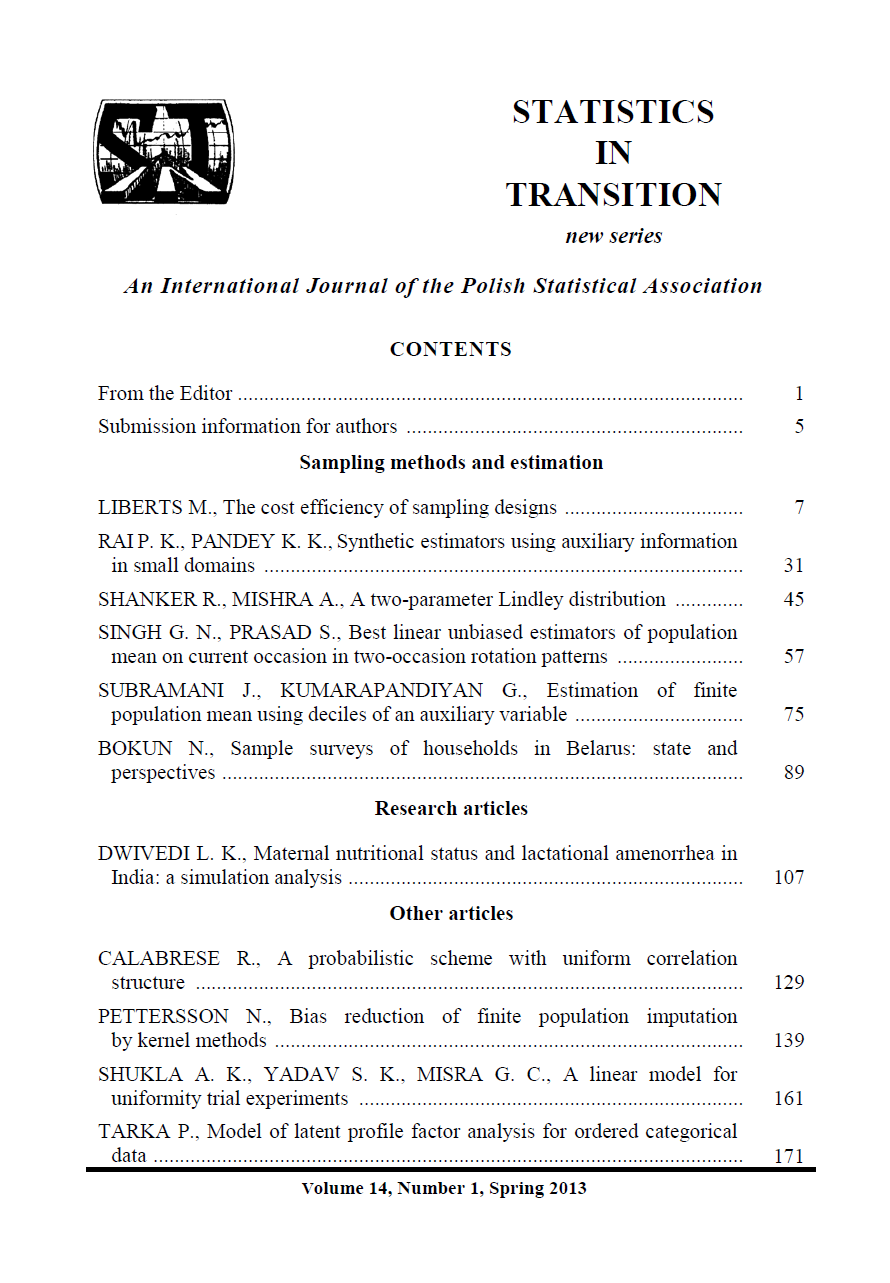ARTICLE
ABSTRACT
In the literature factor analysis is admittedly a well-known and effective multivariate method in the reduction of extensive and broad data, e.g., in the analysis of too many variables. It is also known for the process of unidimensional or multidimensional scale/s construction. Typically, in many studies (especially those pertaining to market research area) a common factor analysis solution is used (based on continuous data). However, there are rarely ever undertaken studies pertaining to latent variable models where other type of data is used based on discrete variables. One of these models might be called Latent Profile Factor Analysis - LPFA. In this article author’s main objective is to propose and discuss its (LPFA) main assumptions. In order to prove the model’s functionality in practice of market research, a brief example of LPFA model for ordered categorical data (based on one-factorial solution) in reference to hedonic consumption data is given at the end of the paper
KEYWORDS
latent profile factor analysis model, ordered categorical data.
REFERENCES
AGRESTI, A., (2007). An introduction to categorical data analysis, 2nd ed. New Jersey: John Wiley and Sons.
ANDRICH, D., (1978a). Application of psychometric model to ordered categories which are scored with successive integers, “Applied Psychological Measurement”, 2, pp. 581–594.
ANDRICH, D., (1978b). A rating formulation for ordered response categories, “Psychometrika”, 43, pp. 561–573.
BARTHOLOMEW, D. J., KNOTT, M., (1999). Latent variable models and factor analysis. London: Arnold.
BARTHOLOMEW, D. J., (2002). Old and new approaches to latent variable modelling, [in:] MARCOULIDES, G.A., MOUSTAKI, I. (Eds.). Latent variable and latent structure models, New Jersey: Lawrence Erlbaum Associates, pp. 1–15.
COHEN, J., COHEN, P., WEST, S. G., AIKEN, L. S., (2003). Applied multiple regression/correlation analysis for the behavioral sciences, (3rd ed.). Mahwah, New York: Lawrence Erlbaum.
DEMARIS, A., (2004). Modeling continuous and limited response variables. Hoboken, New York: John Wiley and Sons.
EMBRETSON, S. E., REISE, S., (2000). Item response theory for psychologists, New Jersey: Lawrence Erlbaum Associates.
JÖRESKOG, K. G., MOUSTAKI, I., (2006). Factor analysis of ordinal variables with full information maximum likelihood, unpublished report.
LONG, J. S., FREESE, J., (2006). Regression models for categorical dependent variables using Stata, (2nd ed.). College Station, TX: Stata Press.
MAGIDSON, J., VERMUNT, J. K., (2005). Factor analysis with categorical indicators – a comparison between traditional and latent class approaches, [In:], VAN DER ARK, L. A., CROON, M. A., SIJTSMA, K., (Eds.), New developments in categorical data analysis for the social and behavioral sciences, New Jersey: Lawrence Erlbaum Associates, pp. 41–62.
MASTERS, G. N., (1982). A Rasch model for partial credit scoring, “Psychometrika”, 47, pp. 149–174.
MOUSTAKI, I., KNOTT, M., (2000). Generalized latent trait models, “Psychometrika”, 65, pp. 391–411.
MOUSTAKI, I., (2003). A general class of latent variable models for ordinal manifest variables with covariate effects on the manifest and latent variables, “British Journal of Mathematical and Statistical Psychology”, 56, pp. 337–357.
SAMEJIMA, F., (1969). Estimation of latent ability using a response pattern of graded scores, “Psychometrika Monograph Supplement”, 17, pp. 1–97.
TARKA, P., (2010). Latent variable models - issues on measurement and finding exact constructs – “Przegląd Statystyczny”, 4, pp. 142–167
